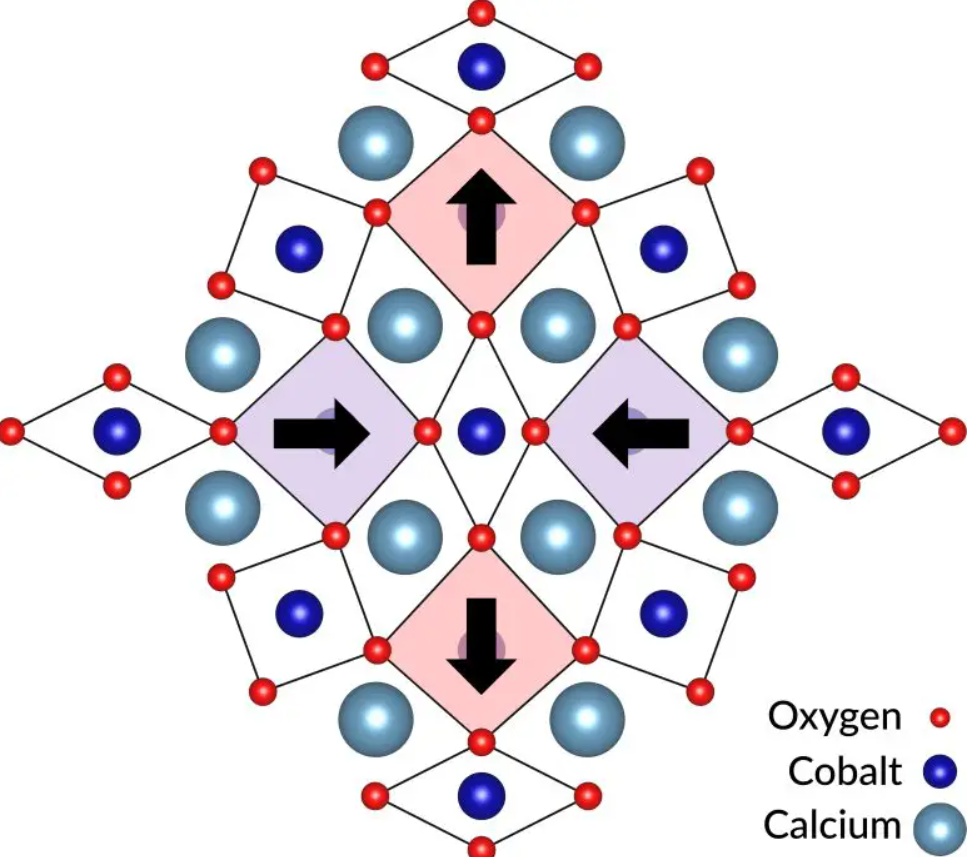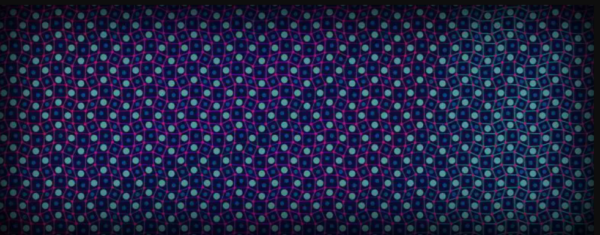This diagram illustrates how an electrical tug-of-war between the layers of a novel quantum material has distorted its atomic lattice into a spectacular herringbone pattern. The material’s creators at SLAC and Stanford are just beginning to investigate how this ‘massive’ distortion impacts the material’s qualities.
National Accelerator Laboratory at SLAC
Its “striking” herringbone pattern, formed by an electrical fight between the atomic layers of the material, may have unique properties that researchers are just beginning to examine.
Scientists at the Department of Energy’s SLAC National Accelerator Laboratory and Stanford University have created a unique quantum substance in which the atomic framework has been significantly deformed into a herringbone pattern.

According to Woo Jin Kim, the study’s principal author and a postdoctoral researcher at the Stanford Institute for Materials and Energy Sciences (SIMES) at SLAC, the distortions caused by this material are “massive” in comparison to those caused by other materials.
Harold Hwang, professor at SLAC/Stanford and director of SIMES, remarked, “This is a really basic conclusion, so it is difficult to forecast what may or may not arise from it, but the possibilities are fascinating.”
“According to our team members’ theoretical modeling, it appears that the novel material possesses magnetic, orbital, and charge order features that we intend to examine further,” he stated. These are some of the traits that scientists believe give quantum materials their unexpected behaviors.
The study team detailed their findings in a scientific article published in Nature.
Developing a Novel Quantum Structure by Means of Jenga Chemistry
In studies at SLAC and Stanford, scientists altered the atomic structure of the material on the left, which is known as brownmillerite and consists of octahedral and tetrahedral layers, by chemically removing layers of oxygen, much like Jenga players meticulously removing wooden pieces. The resultant material, on the right, was drastically deformed into a herringbone pattern due to a Jahn-Teller effect-induced electrical tug-of-war between its layers.

Compared: high-rises and octahedrons
The herringbone-patterned material is the first example of the Jahn-Teller (JT) phenomenon in a layered material with a flat, planar lattice, such as a skyscraper.
The JT effect resolves the difficulty an electron has when it approaches an ion — an atom with one or more electrons missing.
Similar to how a rolling ball would stop and settle in a low location, the electron will seek for and fill the vacancy in the atom’s electron orbitals with the lowest energy state. Occasionally, though, there are two vacancies with identically low energies. Then what?
Hwang said that if the ion is in a molecule or crystal, the JT effect modifies the surrounding atomic lattice so that there is only one vacancy in the lowest energy state, so solving the electron’s difficulty.
And when the entire crystal lattice is composed of JT ions, the overall crystal structure may distort, allowing the electron’s issue to be jointly resolved for all ions.
This is what occurred in the research.
How a Race for Electrons Distorts Quantum Matter
Diagram depicting the electrical tug-of-war between negatively charged cobalt ions and positively charged calcium ions that caused distortions in a novel quantum material. In what is known as the Jahn-Teller effect, each cobalt ion attempts to draw calcium ions from the layers above and below it, distorting the atomic lattice in the direction of the arrows. Submitted by: Woo Jin Kim/SIMES
Hwang stated, “The Jahn-Teller effect generates strong interactions between electrons and between electrons and the lattice.” This is believed to have a crucial role in the physics of some quantum materials.
The JT effect has previously been proven for single molecules as well as three-dimensional crystalline solids composed of ions organized in octahedral or tetrahedral structures. In reality, JT oxides based on manganese or copper display enormous magnetoresistance and high-temperature superconductivity, prompting scientists to ponder what might occur with materials based on other elements or with a different structure.
In this work, SIMES researchers transformed brownmillerite, a material composed of cobalt, calcium, and oxygen (CaCoO2.5) with a distinct stacking of octahedral and tetrahedral layers, into a layered material (CaCoO2) capable of exhibiting the JT effect. To create the first nickel oxide superconductor, they used a chemical technique invented by SIMES a few years ago.
Pulling out Jenga blocks
Kim created a thin film of brownmillerite and chemically removed single layers of oxygen atoms from its lattice, similar to how Jenga players remove individual blocks. The lattice collapsed and settled into a flat, planar structure with alternate layers of negatively charged cobalt ions – the JT ions – and positively charged calcium ions.
Kim said that each cobalt ion attempted to extract calcium ions from the layers above and below it.
“This tug-of-war between neighboring layers resulted in a magnificent distortion pattern that represents the best and most harmonic compromise between the competing forces,” he explained. Yet the associated lattice distortions are enormous compared to those in other materials, accounting for 25 percent of the distance between ions in the lattice.
The research team, according to Hwang, will investigate this astonishing new electrical arrangement using X-ray equipment accessible at SLAC and elsewhere. “We also wonder what would occur if we dope this material by substituting some atoms with others to alter the quantity of free electrons,” he added. There are several fascinating opportunities.
Reference: “Geometric frustration of Jahn–Teller order in the infinite-layer lattice” by 22 February 2023, Woo Jin Kim, Michelle A. Smeaton, Chunjing Jia, Berit H. Goodge, Byeong-Gwan Cho, Kyuho Lee, Motoki Osada, Daniel Jost, Anton V. Ievlev, Brian Moritz, Lena F. Kourkoutis, Thomas P. Devereaux and Harold Y. Hwang, 22 February 2023, Nature.
Cornell University, the Pohang Accelerator Laboratory in South Korea, and the Center for Nanoscale Materials Sciences at Oak Ridge National Laboratory, a DOE Office of Science user site, contributed to this work. It received significant financing from the DOE Office of Science and the Emergent Phenomena in Quantum Systems Program of the Gordon and Betty Moore Foundation.

